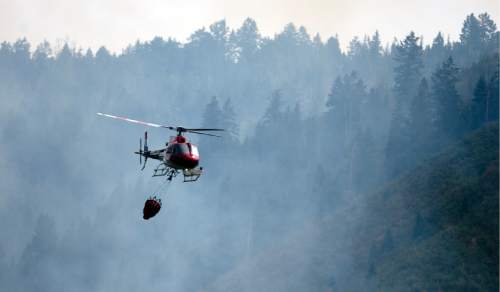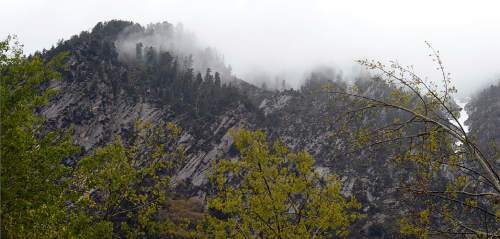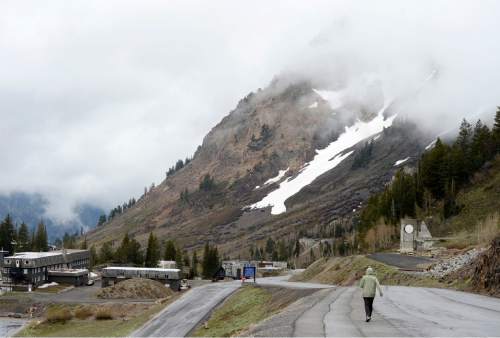This is an archived article that was published on sltrib.com in 2015, and information in the article may be outdated. It is provided only for personal research purposes and may not be reprinted.
May's record-breaking rain is dousing fears of a long, daunting wildfire season.
Wildfire experts were worried about the fiery consequences of Utah's history-making warm, dry winter. Brush fires ranging from 10 to 120 acres were already igniting up and down the state in early February, even though wildfire season doesn't technically start until Monday.
"With no rain and kind of an unknown on the horizon, we were looking at maybe an early start," said Jason Curry, spokesman for the Utah Division of Forestry, Fire and State Lands. But then storms rolled in this month — and kept rolling in.
Thursday's showers broke the month's all-time record for days of measurable rain in Salt Lake City: 17 days, set in 1995. The downpours have pushed the wildfire season to as late as August.
May is a critical month for plant growth, and much to wildfire forecasters' satisfaction, Utah's native grasses and shrubs have been flourishing thanks to the rain. Around the state, the grasses are "waist high or higher," Curry said.
The native grasses retain moisture a lot longer than the state's cheat grass, an invasive weed that could dry out as soon as next week. So without a lot of dry fuel, potential blazes don't have as much to work with.
"It really helps us get through the month of June without a huge increase in fire potential," said Shelby Law, meteorologist for the Bureau of Land Management. Then, if July sees its typical monsoon weather, that moisture will put off the significant wildfire dangers again, possibly until August.
Even the timber in the higher elevations — which was said just last month to be too far gone to recuperate — has benefited. The trees haven't fully recovered, but they are doing better thanks to both the long rains and the lasting moisture from the snow, Law said.
However, when the late summer month arrives, all of this lush vegetation could spell danger.
"It really is a double-edged sword," Law said. The grasses won't stay green all year; they never do. As the August sun beats down on them, they will dry out and die — which means there will be a lot more fuel for wildfires to burn.
All of this rain does not change the fact that the state is going through a drought, either, Law said, and the danger of all this vegetation doesn't end this year. Much of it can get snowed on and lie in wait through the winter. Law warned that when the snows recede, they might unveil a landscape full of dry fuels.
Agencies like the U.S. Forest Service try to cut back on that danger. Right now, a forest service crew is tearing up 600 acres of vegetation in Piute County, while 10 prescribed fires burn in Box Elder to San Juan counties.
The Utah Department of Transportation mows grasses, as well, and power companies do some mitigation around their power lines, Curry said.
But homeowners can also help. As the tall grasses around their homes dry out, Curry advises people to trim or remove them. For more tips about how homeowners can protect their homes, visit FireAdapted.org.
Twitter: @MikeyPanda











